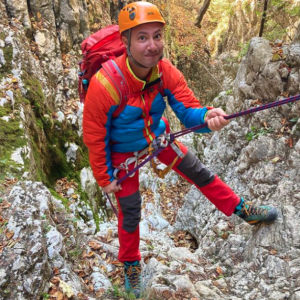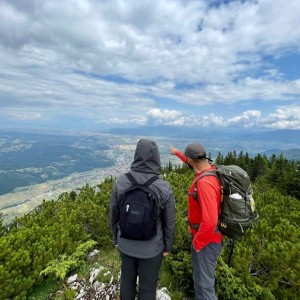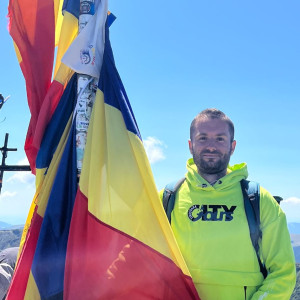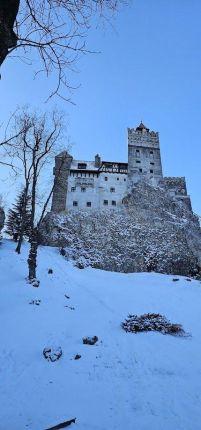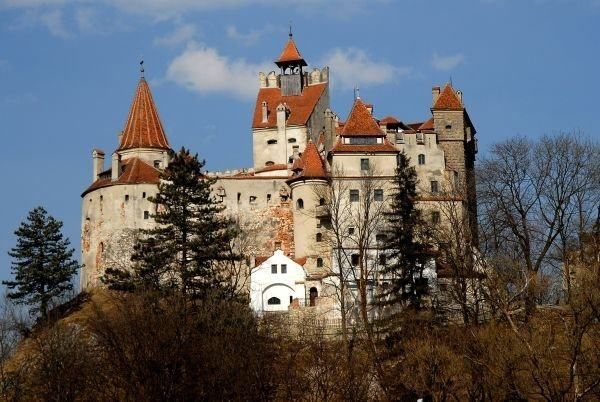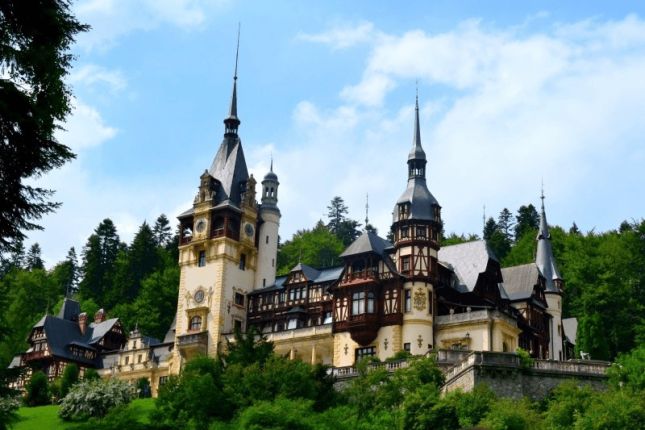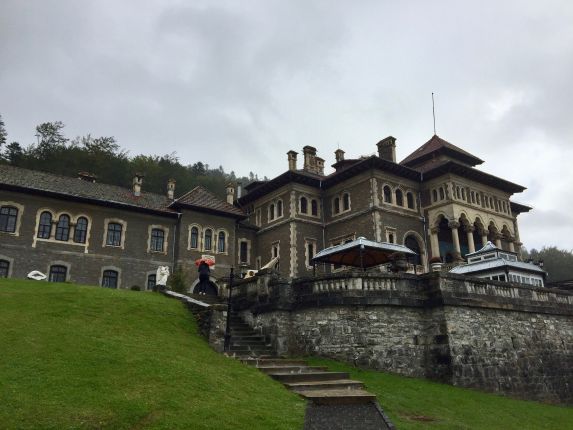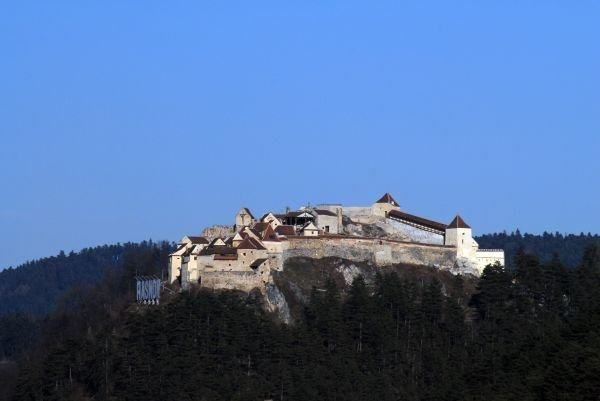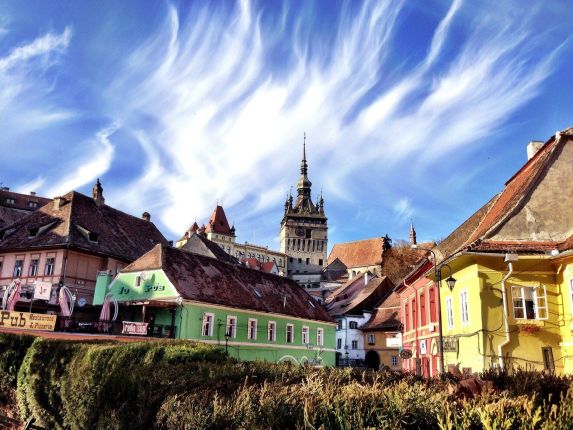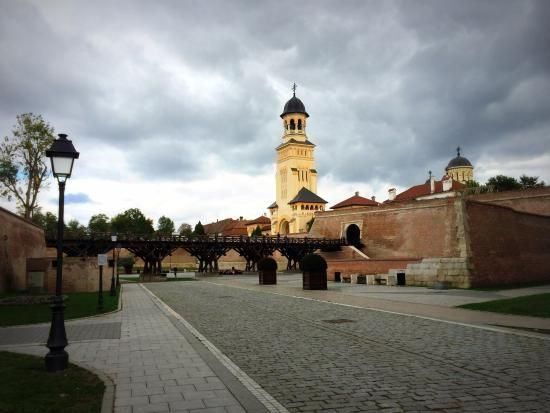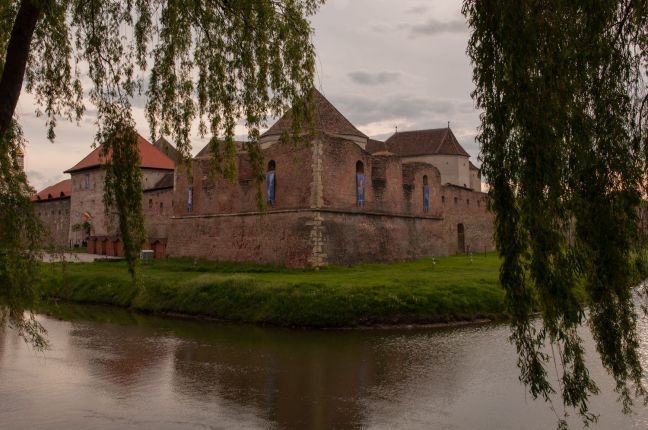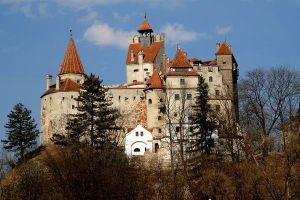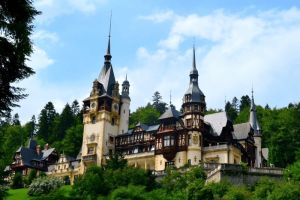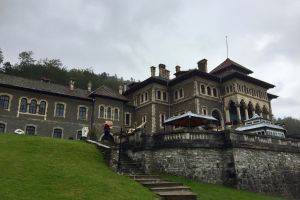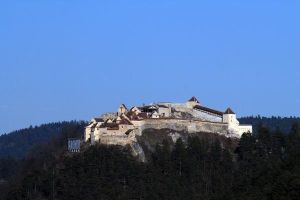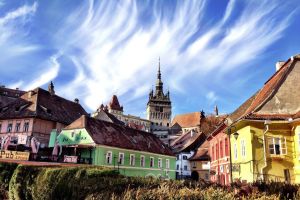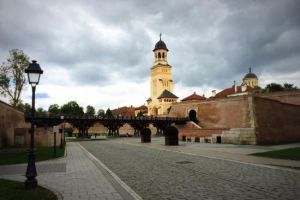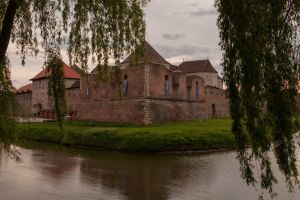
Castles, Fortresses & Historic Tours
Romania has a rich history and a LOT of historical attractions: from the 2,000 year old UNESCO ruins of our Dacian ancestors to numerous medieval castles (including the popular Bran "Dracula" Castle), medieval citadels, fortified villages and fortresses in mountain valleys, there is much to see.
Check our selection of guided day trips starting from different tourist cities to visit these sights. At the end of the page you'll find a list and description of Romania's most important medieval and historical tourist attractions.
Tour type:
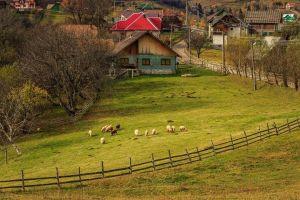
3-Day BEST of Transylvania Tour: Brasov, Sighisoara, Bran & Viscri
Start from: Bucharest
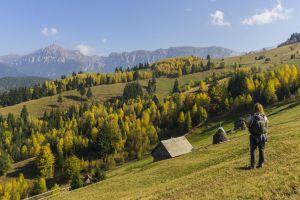
Bran Castle & Hike in Piatra Craiului National Park
Start from: Bucharest

Castle Tour & Hiking with Great Views in Prahova Valley
Start from: Bucharest
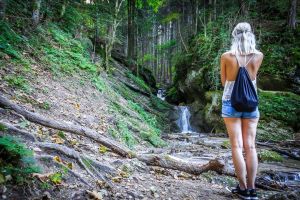
Hiking Day Trip: 7 Stairs Canyon & Castles Sightseeing
Start from: Bucharest
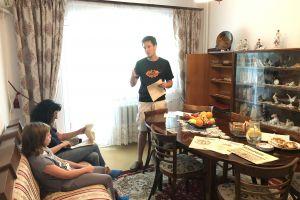
Museum of Communism: A Time-Capsule of Ordinary Lives
Start from: Bucharest
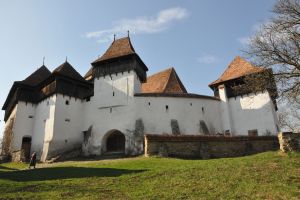
Transylvania Culture & History Day Trip: Viscri, Sighisoara & Rupea
Start from: Brasov
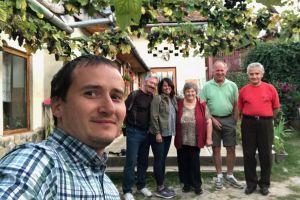
2025 Exclusive Romanian Experience [8-day, shared]
Start from: Bucharest
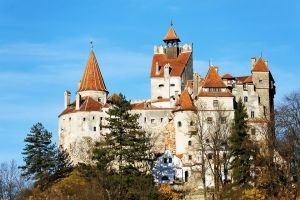
Private Day Trip to Brasov, Bran Castle and Peles Castle [NO Dracula stuff]
Start from: Bucharest
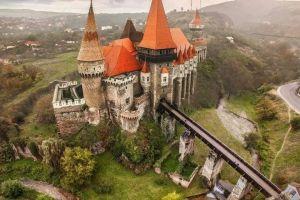
Corvin Castle and the Mystic Dacian Ruins at Sarmisegetusza
Start from: Timisoara

{{ activity.title }}
Start from: {{ activity.starting_point }}
Reviews about Castles, Fortresses & Historic Tours

We had an unforgettable day on this tour near Cluj-Napoca! Florin, our guide, was incredible—his passion for history made every stop come alive. Walking and talking with him felt like spending the day in a living classroom. Alba Iulia Citadel was the highlight for us. The mix of ancient Roman ruins, royal and religious history, and the lively presence of a modern university made it surprisingly delightful. Each corner told a story, and we felt completely immersed. The tour’s pace was perfect. We had time to explore what interested us, and moving between stops was smooth. As a group, we opted to enjoy a meal at the Citadel, which was delicious with exceptional service. Everything felt organized, relaxed, and thoroughly enjoyable. We’d highly recommend this tour to anyone looking to experience the history, culture, and charm of the Cluj-Napoca area.

This was an amazing experience with a very knowledgeable and generous guide - wasn’t worried about how long we took - didn’t feel rushed and very accommodating : very very highly recommended!! September 2025

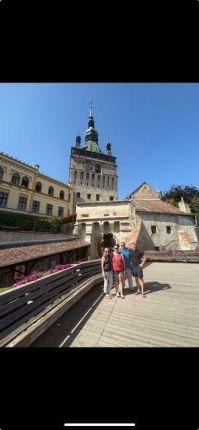
We had a wonderful tour to the 'Merry Cemetery', a visit with a Roma family and Sighisoara! Florin is an excellent guide - knowledgeable on all aspects of Romanian history and culture. We learned so much ! We were able to watch the process of working with copper at the Roma family residence to make pots, jewelry and more ! The walled city of Sighisoara was amazing. We added this tour to our Maramures tour and were so glad we did!


Excellent tour with a wonderful guide. The castles are great, Peles in particular in spectacular. It was also enlightening to finally hear the true history of Vlad Tepes and how the Dracula story came about. Bran castle is very touristic but still worth the visit.
Medieval Castles of Romania
Romania has an impressive collection of medieval castles, fortresses, citadels, and fortified churches which illustrate the rich and often riotous history of the country, full of twists, turns, and conflicts.
The most well-known Romanian castles tourists like to visit on day trips are Peles Castle, Bran (Dracula) Castle and Corvin (Hunyade) Castle. There served as residence for lords and kings of the area and are truly imposing and marvelous attractions. But there are many other castles and fortresses you should consider for your holiday in Romania such as as Poenari Castle, Rasnov Citadel, Fagaras Fortress or even the villages with fortified churches in Transylvania. One thing is certain - all these medieval castles and fortresses have a lot of history to tell and as you maybe expect, hold lots of myths, tales and legends surrounding them.
As is the case with every country, the stories around castles become part of national history and culture. These majestic constructions are not just simple tourist attractions - everything about them, from where they were set, who lived in them, how and why they were built, whether or not they were ever conquered, destroyed or rebuilt, are pieces of information. These make up the story of the land, its people, its customs and this is what you’ll hear from a local guide.
Our tourist guides are passionate about history, are very friendly and offer excellent services. So they’re eager to take you on guided day trips to visit the castles of Romania. See below some of Romania’s most famous medieval and historic tourist attractions:
Bran Castle – the famous Dracula Castle of Romania
Bran Castle is spectacular – and even scary! - when seen from below or from a distance. It was originally a stronghold built in the vicinity of the Bran-Rucar Pass, perched on the peak so it overlooked the South road and the village of Bran (now a cute mountain resort full of hotels, villas and restaurants). This is probably one of the most popular historic attraction in Romania mainly due to its (inaccurate) association with Bram Stoker’s Dracula and is also improperly called Dracula Castle or Vlad the Impaler Castle.
Undoubtedly Romania’s most famous medieval castle, Bran Castle will welcome you with its lovely park once you enter. There are a couple of cafes and a pond there too. You can take a lovely stroll if the place is not too busy, have a coffee, a strudel (lot of Germanic influence in the area).
The Romanian state gave the castle to the Royal family in the 1920s and who renovated and carefully restored it, turning it into a summer residence. The cool mountain air is quite refreshing here even in the most torrid of days. After the communist regime was installed, the royal family was chased away and stripped of their possessions, Bran Castle included. It became a museum in 1956.
Recently, video projections have been added to dip into the unexploited pool of horror folklore stories tourists come on day trips to discover in the castle. The sensorial experience is described by tourists as being fantastic.
Peles Castle – the Royal Family’s Summer residence
Another famous summer residence of the Romanian monarchy, Peles Castle is located in Sinaia and built in a Neo-Renaissance style. It is probably the most popular attraction of the small mountain city which developed around the presence of the royals. It was built in the 19th century and it incorporated novel technology for those times. If you are lucky enough during your visit you may catch a glimpse of the retracting glass ceiling, an engineering marvel of the time that king Charles I loved to watch. The whole castle is filled with small mechanical wonders as the King had a real passion for innovation and had a rather inquisitive and playful nature.
Of all of the Romanian castles, Peles is the most beautiful in our opinion and filled with so much modern history that makes monarchy supporters everywhere nostalgic. You can visit the castle on your own but we highly recommend going on a guided tour so you can find out how the Romanian Royal Family used to live and more about Romania’s history and how the castle is connected. When you see the Hall of Honor, where events are still taking place today, you will hear a lot of stories and also some interesting myths from when the communist regime came to power and banished the Royal Family.
Featuring 160 rooms, a luxurious interior, secret passages, an impressive art collection, heavy armors, decorated mirrors, and wooden carved furniture, Peles Castle is a testament to how the royal family worked to open up the country to the Western way of life of those times. On a guided tour of the castle while visiting Queen Mary’s music room you’ll find out what she did to support arts. And since you’re in Sinaia make sure to visit the house of George Enescu, the famous Romanian composer, who was a protégé of the queen.
In Peles Castle you will admire impressive paintings and sculptures, heavy armors in the Armor Room, luxurious silk embroideries and fine carpets, heavily decorated mirrors, Murano glass windows, wooden carved furniture and gold and silver elements around every corner. A guide can tell you the story of the famous Venetian mirrors, one of which is over 3 meters long. Transporting them was a real challenge given the state of roads in 19th century Romania!
Pelisor castle is part of the construction ensemble around Peles Castle, built in the late 19th, early 20th century. The edifice was seen as a gift from king Charles I to his heirs. Remarkable about Pelisor, and other constructions done during the reign of the Hohenzollern family, is the fact that, while they were open to technological improvements of the Western architectural styles of the time, they were also keenly aware of the fact that they represented Romania and Romanians.
Therefore, a lot of local elements were included in the buildings. From local styles of compartmentalizing to elements of décor and facade, these small tokens of recognition created the unique and highly appreciated style of these two famous Romanian castles.
The entire setting of Pelisor is thought to have been an extension of Queen Mary’s artistic nature. This is where she would retreat with her family and shield away from the realities of the world and the expectations of her function. You cannot say Pelisor without thinking of Queen Mary. Even much so that if you visit the castle in July, one myth says you should be on the look out for a peculiar scent of Indian violets. This was the personal and preferred perfume of Queen Mary, and it simply manifests in the Golden Room around the anniversary of her death. Museographers have no explanation for it. Worth taking a day trip to visit the castle and check it out, no?
Cantacuzino Castle – Romanian nobility at its finest
Cantacuzino Castle located in Busteni, near Sinaia, was built in 1911 by prince Cantacuzino, also called Nabab due to his vast fortune. As the Romanian prince Cantacuzino was the only person able to compete with the monarchy in terms of fortune, Cantacuzino Castle was designed to compete with Peles Castle in beauty and luxury.
The lavish setting, the surrounding park, and the unique view of Bucegi Mountains from the castle terrace, not to mention the fact that the construction is spread on more than 3000 square meters, make it a serious contender for Peles. The interior featured sewage, running water and electricity making it one of the most modern castles at that time. Queen Mary and Princess Ileana themselves held photo sessions in traditional costumes in the unique setting this castle offers.
Past a winding parkway, you are met with the generous park, decorated with spring wells, a small waterfall, and a grotto. Now the park is the perfect location for outdoor wedding ceremonies and other such events. Now you can dine at one of the two large restaurants while admiring this remarkable view.
The decorative repertoire of the Cantacuzino Castle was strongly influenced by the Romantic movement. But the castle was confiscated by the communist regime and became a tuberculosis asylum. Unfortunately, during this time the castle interior was painted over and most of the ornaments were covered or destroyed as the regime wanted everything that had to do with “rich people” erased from history.
After the fall of the communist regime in 1989 and the recovery of the castle by the descendants of Cantacuzino family, they restored the interior as much as was possible and opened it to the public. On a guided day trip from Bucharest or Brasov you can visit this castle along with Peles or even Bran to get a full picture of Romanian history from different eras.
Corvin Castle – an authentic medieval fortress in Romania
Built in a military architectural style with a unique and complex layout, Corvin or Hunyady Castle dates back to the 15th century when Voivode (prince) Iancu de Hunedoara decided to turn the citadel into a castle, a process that would take up to four centuries. Designed with the main purpose of defense, the walls are 2.5 meters thick, and 22 meters high, and some of its most prominent features are the East and West Towers, namely the Capistano Tower and the Painted Tower.
This is the best example of Gothic architecture in Transylvania and looks like something out of movies and fairy tales. On a guided tour of the castle you’ll hear unbelievable and impressive legends and stories about the castle, the torture rooms or the prison.
One interesting legend is the one of the family coat of arms, including a raven holding a golden ring. It is said that Iancu de Hunedoar was the illegitimate son of Sigismund of Luxembourg and a woman from Hateg county, who, in order to keep her honor intact, was married to one of the king’s men. The king also gave the woman a ring that would go to the child so he could be later recognized in court. But the woman lost the ring, which was picked up by a raven. Iancu de Hunedoara followed and slayed the raven. When the king heard about the story, he had the image of the raven carrying the ring carved on the coat of arms. The castle can be visited every day of the week, with a different program on Mondays.
Rasnov Fortress – the most authentic medieval fortress in Romania
Unlike Peles Castle, which was a modern day architectural achievement and a residence, Rasnov Fortress (Rosenau in German), was built in the Middle Ages with the sole purpose of protecting villagers, keeping an eye on the area, and guarding against Turkish and Tartar invaders. According to historical records, the Saxons built it on a pre-existing structure because of its great vantage point on a hilltop.
Due to its almost inaccessible location and natural defenses, Rasnov Fortress resisted countless attacks and was further developed by the Saxons to serve as a long-term refuge. Legend has it that in all its years, the fortress was only conquered once because people ran out of water. Following this incident, the rulers had Tartar prisoners dig a well through stone to make sure this would never happen again. On a guided tour of the fortress you’ll see the well and hear some legends about it.
The interior is well-preserved and of the many buildings inside the fortress make sure you visit the defense tower to see what invaders had to deal with. There is also a feudal art museum inside, holding weapons, furniture, armors, historical traditional costumes of the area. And since this was a military edifice and prisoners were held here at some time, torture instruments can also be seen and a guide will tell you how they were used – since some are really strange!
Rasnov Fortress is one of the best preserved medieval attractions in Romania and was recently restored. It can be accessed via car or a a panoramic lift from the city of Rasnov or by taking the stairs if you want to test your physical condition. There are also small tractor-like trains taking tourists between the fortress and the parking lot at the foot of the hill.
Sighisoara Citadel – the best preserved in Europe
You cannot visit Transylvania and not see the Citadel of Sighisoara. It is one of the most impressive places, unique in Europe, as it is the only medieval citadel still inhabited and with functional institutions set in the heart of the citadel. Build on a hill, overlooking what is not the city of Sighisoara, which has developed little by little, especially in communist times, Sighisoara has not lost its appeal.
Tourists flock to Sighisoara every year to see the colorful buildings, to walk on the narrow streets, and feel like they become themselves a part of history. Sighisoara Citadel is one of Romania’s most famous historical tourist attractions and walking on its streets on a day trip you’ll see why. The atmosphere is relaxing and really takes you back in time. Saxon culture and heritage at every step. Our guides have much to tell you about the citadel. Everything in the citadel is impressive and well preserved – since people still live here! And even if you don’t spend the night in one of the charming or luxurious boutique hotels, you can still get the vibe of the place by simply taking a stroll. Our guide will take you to the Clock Tower, a remarkable construction with a carousel of figurines that move every hour on the hour, to the covered staircase, or to the Church on the Hill and you’ll have seen some of the main attractions of the citadel. A meal at the restaurant set in the house where Vlad Dracul was born in the 15th century, and a tour of the weapons’ museum, set in the same location, should just about round up the experience.
The most important event held in the citadel of Sighisoara is the Medieval Festival. The 2022 edition of the festival, its 28th, is scheduled for the weekend of July 29 – 31.
The Saxon villages with fortified churches – history and rural culture combined
A great for day trip from Brasov, Sibiu or Cluj-Napoca is to visit the famous Saxon villages with fortified churches which are typical for South-East Transylvania. 7 of them are part of UNESCO heritage the most famous being Viscri, Biertan, Crit and Saschiz. But all the villages in the area are a well-preserved testament of Romania’s history and rural culture. That’s why if you ask Romanians what they think of when you say Transylvania they will answer Saxon villages, fortified churches, castles, fortresses and picturesque sceneries.
Any day trips to visit these wonderful sites will have a different itinerary depending on which city you start from, and usually also include Sighisoara Citadel. Our tour guides are flexible and will make sure you learn about Transylvania’s history, see rural life and learn what role these important medieval attractions played in Romania’s history.
When travelling from Brasov to Sighisoara, you can see Rupea Citadel, Viscri, Mesendorf, Crit, Cloasterf, Saschiz, with a small detour to see the fortified church at Darjiu. When traveling from Sibiu to Sighisoara, you can visit Biertan, Mosna, the fortified Church at Valea Viilor (where you absolutely must see the interior of the church ceiling, with a network of connecting rhombuses, looking like a neural network), and Medias. If you’re starting your day trip from Cluj-Napoca you’ll see Biertan, Sighisoara Citadel, Medias and possibly Alma Vii. The heart of Transylvania is about visiting these important historical attractions.
Not so much into history? No problem! You can still enjoy the natural setting, the quiet life, the incredible food, the friendly people and get some history lessons in the background. You can even opt for day trips on bike, on horseback or photography tours to these medieval attractions.
Alba Iulia Citadel – Romania’s spiritual capital
People who love historical monuments, interesting architecture, and good food, will love any of the day trips from Cluj-Napoca or Sibiu to visit Alba Iulia Citadel. This is Romania’s largest fortress and a place of great historical importance: the Great Union 1918 took place here and modern-day Romania was born. The citadel is most crowded on December 1st the Romanian national day. State officials usually travel to Alba Iulia to attend the military parade and other festivities to mark the occasion.
In the early 2000s the Alba Carolina Citadel, as it is also called, has benefited from considerable restoration works with an improved information structure for tourists and innovative types of presentation like the video reconstruction of the Roman Castrum in the museum dedicated to the former castrum. People can even try out Roman uniforms to get into the shoes of the soldiers of the XIII Gemina Legion.
It is simply impressive how so much information has been kept about this citadel despite the numerous changes it underwent throughout the centuries. The same strategic position was used by a Roman Castrum in the 2nd century, then it was turned into a medieval citadel in the 16th and 17th centuries. In the 18th century, the Habsburgs, after having free the territories in Hungary and Transylvania from Turkish occupation, have taken over the administration of the liberated territories. During this time, the fortress was turned into the imposing citadel it is today.
Following the unification of the Romanian regions under one king in 1918, King Ferdinand and Queen Mary were crowned king and queen of Romania at the Coronation Cathedral, in 1922. The Cathedral is an impressive edifice which adds to the historical importance of Alba Iulia Citadel.
If you are lucky to catch some historical celebration or local event, city officials are known to organize various festivities. Surely there are numerous themes to choose from. You can either watch Roman soldiers interact with the local Dacian ancestors of Romanians, witness a medieval siege or the changing of the Guards in 18th century uniforms, or actors wearing interwar clothes and taking a stroll through the citadel. One trip through so many ages.
Fagaras Fortress
As the story goes for many other Romanian castles, Fagaras Fortress in Brasov county was built in a strategic location on top of a pre-existing 12th century wooden construction. Medieval rulers would pick the best locations to keep an eye on the roads, have access to water and food resources in case people needed to shelter during a long siege. The first construction was destroyed by a Tartar attack in 1241 but it was fortified and improved in the following centuries.
More than just a military fortification, in the 17th century Fagaras Fortress was the residence of princes Gabriel Bethlen between 1613 and 1629, then of Georg Rakoczi between 1630 and 1649. By this time, the interior was thought to have been luxurious as Italian Renaissance architects and glassmakers had been brought in to work on the construction. The glamour was lost, however, in the 18th century when the fortress became a military garrison.
And later during the communist regime, the fortress was used as a prison. So once again, the twists and turns of history have altered the face of this beautiful medieval fortress. A guide will tell you many more stories and facts about this impressive historical attraction in Romania.
Rupea Citadel – a citadel for the people
On a day trip 63 kilometers away from Brasov you can visit Rupea Citadel, one of the oldest archeological sites in Romania. is believed to have been built on the ruins of an ancient Dacian fortress. As with most fortified edifices in Transylvania, it became a refuge meant to protect the locals in the 14th century, after it was transferred for administration to the Szekely community. The construction extends on 11 hectares and has three levels: Upper, Middle, and Lower. The levels are separated from one another and have their own towers.
Rupea Citadel served both defensive as well as administrative purposes and by the 17th century it became the center of community life in the area hosting hundreds of people. It had a chapel, a local market, a fountain, among other important community constructions as it was an important trade center, set at the crossroads of three major regions. On a guided tour you’ll hear more about life in in those times and how the citadel played an important role in Romania’s history.
Poenari Castle – the real residence of Vlad Dracula
Looking for the real Romanian castle of Vlad the Impaler? Then you should visit Poenari Castle. At the base of the Transfagarasan road in the heart of the forest atop a cliff, this castle is worth visiting on a day trip from Bucharest or Brasov. The castle was built in the 13th century with the purpose of defending the region from the constant attacks of the Turks and it was repaired and consolidated by Vlad the Impaler (Dracula) in the 15th century. He used Poenari Castle as one of his main residences because of its strategic position.
Its strategic position made it difficult to conquer. Even now, tourists must climb 1408 stairs through the woods to reach the keep. It is a strenuous climb for people with a poor physical condition, but not inaccessible and easy for people who are regularly active. The castle recently underwent restoration works and is now more friendly to tourists.
The road to the forest is enough to disconnect you from the modern world you are about to leave behind. You can even imagine yourself a merchant going up to the castle, or a messenger. Then, just as you get more accustomed to your role, you will get a fright at the sight of the impaled dummies set at the entrance. Such sights were usual back in those times, and it was the way rulers wanted to send a message that those who do not come in peace will be punished.
One gruesome local legend states that, Vlad, looking to avenge a brother for something the city folk of Targoviste had done, sent soldiers to gather all adults on Easter day. The old people were taken from family meals and other events they had been invited to, the young people were taken from folk dances and taken to work on building the fortress until their good clothes snapped on their backs. This was Vlad Voda’s punishment for the offense they had brought a member of his family.
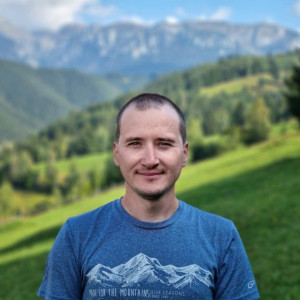
 21 REVIEWS
21 REVIEWS
